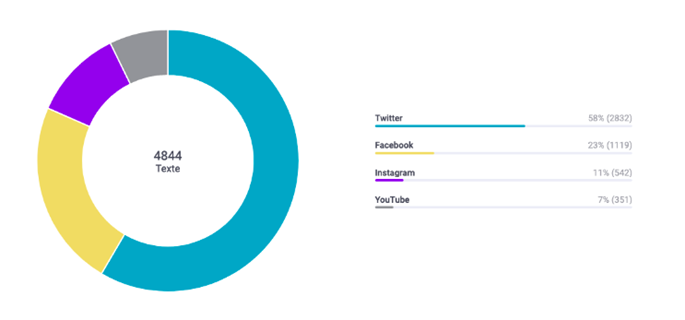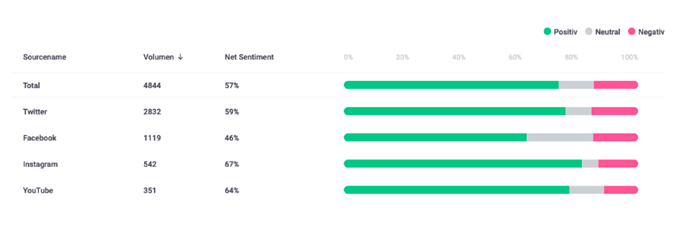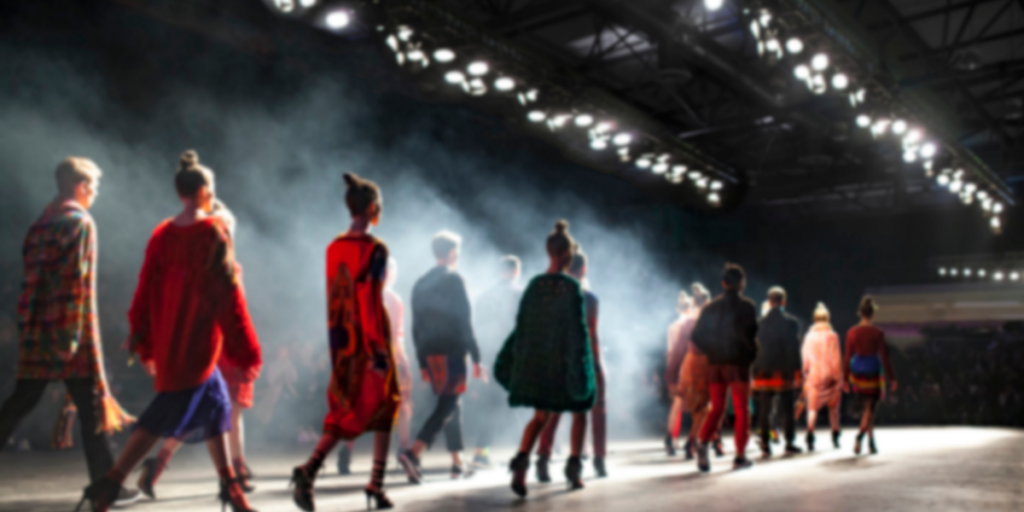Each February, the fashion capitals of the world (New York, London, Milan and Paris) play host to the greatest designers to showcase their Fall/Winter collections. Thousands of visitors attend shows and events while even more can now attend runway shows virtually through live streaming services.
That’s a lot of people with a lot of opinions. We demonstrate how to mine public opinion in the fashion industry for useful insights.
Why Should Fashion Houses Care About Public Opinion
If the 2006 film The Devil Wears Prada has taught us anything, it’s that the fashion industry is dictated by a very small and select sartorial elite. Fashion powerhouses are not renowned for courting public opinion. But then again, Instagram didn’t even exist in 2006.
While editorials still have significant authority in the fashion industry, social media influencers are increasingly dominating the scene, and brands have had to change tact. As Irman Amed, Editor of Business of Fashion magazine put it:
“[Brands] must now live in conversation with the world.[...] At best, brands can now only hope to influence the conversations that people are having about them.”
The fashion industry’s move to attract influencers and use them in their marketing strategies is a clear sign that traditional pipelines are not as dominant as they once were. And in this new landscape, the public has much greater sway. While there’s only one Anna Wintour, there are thousands of aspiring influencers each working to gain a loyal following. How do they gain a following? By posting content that the fashion-loving public enjoys.
Fashion Week, February 2022: An Overview
Fashion week February 2022 took place in the following cities:
New York Fashion Week, February 10th – 14th, 2022
London Fashion Week, February 18th – 22nd, 2022
Milan Fashion Week, February 22nd – 28th, 2022
Paris Fashion Week, March 1st – 8th, 2022.
In light of ongoing Covid restrictions, the guest lists were smaller. For example, in New York, shows that usually host around 500+ attendants were limited to 200 guests, all required to wear the must-have accessory of 2020-2022: a face mask. These protocols were also in place for September Fashion Week, 2021. Virtual events accompanied shows with limited guests lists for those who couldn’t attend in person.
As always, Fashion Week February 2022 generated a lot of online conversation, with people sharing their opinions on Twitter, Instagram, Facebook and YouTube. Using our natural language processing (NLP) technology, we can turn these conversations into interesting and useful insights for fashion brands.
Symanto Case Study: Burberry Fall/Winter ‘22 Collection
In our case study, we analysed the reaction to the Burberry Fall/Winter collection as presented in February and March 2022.
We analysed 4844 conversations on social media for relevant topics to reveal what matters most to commentators online and compared this information with the psychographics of the commentators to identify how different personality types were affected.
We found that loyalist commentators with a highly emotional and self-revealing personality type loved the contemporary style, colours and quality of the collection but disliked the use of cashmere on ethical grounds.
Burberry’s greatest critics were most affected by the lack of availability of the Burberry collection after the show, complaining that most shops were sold out in a matter of minutes.
Here’s an in-depth look at our study and a selection of our findings.
Data Source and Distribution

Our insights were pulled from 4844 online texts spread across Twitter (58%), Facebook (23%), Instagram (11%) and YouTube (7%).
Topic Index
Our technology can accurately identify topics within conversations. We analysed texts for topics relevant to perceptions of the collection and fashion show including:
| Product Attributes | Overall Perception | Appearance | Availability |
|---|---|---|---|
| VarietyProduct GenericPriceQualityEfficacySize/FittingMaterialAuthenticity | General experienceBrand/ReputationCompetition RetentionRecommendation | Theme/StyleLayout/PresentationCleanliness/Maintenance | Product availability |
Net Sentiment Overview
Our technology found that feedback was consistently positive across all social media channels. Overall net sentiment came in at +57%. Instagram commentators produced the strongest net sentiment score at +67% while Facebook produced the lowest score at a still-respectable +46% net sentiment.

Psychographics
Text analysis revealed that Burberry has a largely loyal online following. Most commentators have a positive emotional response to the brand. 80% of the comments suggest that the authors are either loyal or ambassadors of the brand, leaving only 20% of critics and at-risk customers.


Insights summary
As mentioned, the style, quality and colour of the designs were all positively received, while the choice of material (namely cashmere) and availability were negatively criticised in online commentary.
Here are some examples of comments relating to each topic
Positive feedback
Contemporary style
Positive feedback relating to the contemporary forms and cuts of the designs featured most heavily in comments.
“Amazing! Loved the creative setting in which this collection was given. The designs were both modern and timeless in there [sic] beauty.”
Colours
Usually famed for its neutral, muted palette, this season, in a daring move, the Burberry broke from tradition and featured bright colours in their collection. This was positively received by online commentators.
“Love the colour! Moving ahead from pandemic ... we need colour in our lives again. We want anything that is not boring.”
Quality
The quality of fabrics and handling of the materials were mentioned throughout the analysis.
“It is a work of high quality and personal preference. This work must be bought. It's worth it enough to make me all in on this project. Don't regret and participate in this project [sic].”
Negative Feedback
Use of cashmere
Most of the criticism was aimed at the use of animal materials, especially the frequent use of cashmere for the Fall/Winter collection. Commentators challenged the use of animal products from an ethical standpoint both in terms of animal cruelty and the environment.
“This brand works with cashmere, a fabric that is produced by pulling out the hair with metal objects from goats. They suffer a lot and that is why most brands have banned it and have stopped producing them. Stop consuming this brand if you are against animal abuse.”
Availability
Another frequent point of criticism was the limited availability of popular pieces right after the presentation of the collection. Most online shops and retail stores were sold out in a matter of minutes.
“Sell out times for a majority of the collab pieces sold out in less than 60 seconds (the top pieces and more slighter after sizes in less than 30 seconds)”
Get Started With Symanto
Symanto technologies are capable of processing thousands of online comments within minutes. Analyse online conversation in more depth than ever before and reveal useful insights that can help you shape your ongoing business strategies. Get in touch to find out more about the incredible capabilities of our advanced NLP software or go straight ahead and book your free personalised demonstration today.

